One month ago this week, my boots touched ice and I found myself back in Seward, Alaska for my second season with Major Marine Tours. Seward is the first place on the planet to which I have returned, and you can read why here. Last season, though, I had first seen these mountains in May. This time, it was March 1.
Having grown up in Southern California and spent my most recent “winter” in Australia, seasons are not my area of expertise. March and April will be spring, I thought. Flowers. Birds. So on.
I was so wrong, and yet so right.
There is a cold beauty in Seward at this time of year, as the snow-wrapped mountains turn pink with the sunset and waterfalls sharpen to jagged ice. The birds are the eagles, outlined against the white of the mountains, or seabirds in their sharp blacks and white. The flowers bloom in the sky instead of the slopes, as the Northern lights spin above the flat field of a frozen lake.
But the beauty from within Seward paled when, on the one-month anniversary of my arrival back, I spent my day off exploring Resurrection Bay from the deck of the Fairweather Express 2.
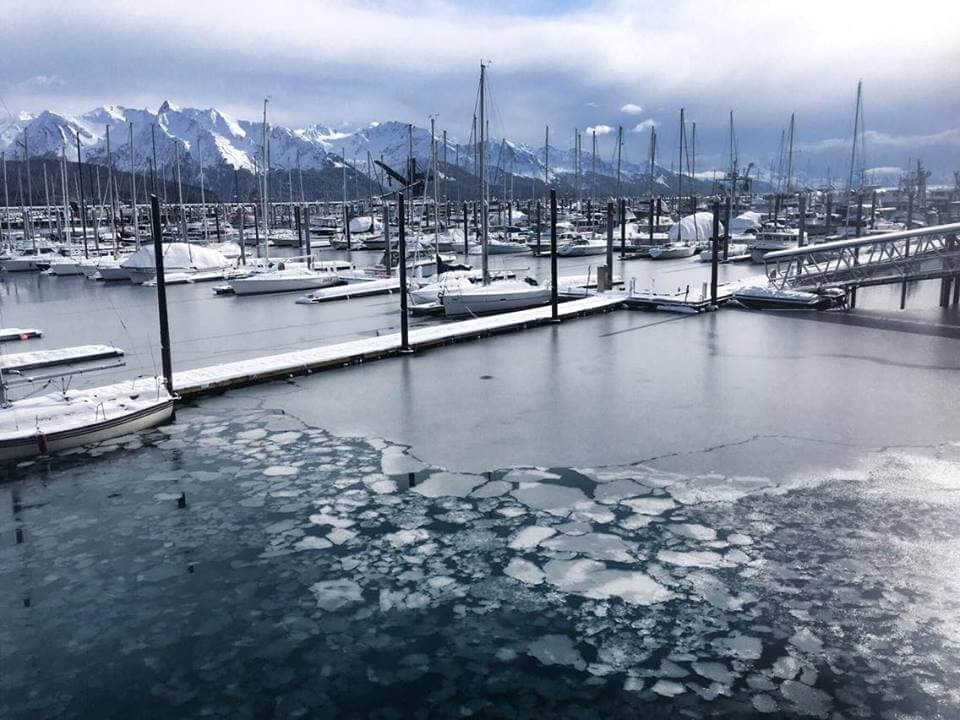
The Trip
At first the weather did not look promising as I walked down the ramp with my fellow deckhands Spencer and Liz. We all had the day off, and as neither of them had worked a trip yet this season, a boat ride seemed the perfect way to spend what would otherwise be a rainy afternoon. I had forgotten, though, how much weather has a different meaning on the water. Cloudy days turn the water luminous, rain ripples still water, and snow feels like magic when you watch the same flurries seen by the soft brown eyes of Steller sea lions. As it was, we had happened upon the perfect day, and the rain that had been forecast merely served to add dimension to the mountains that sat luminous in their circles of silken sun.
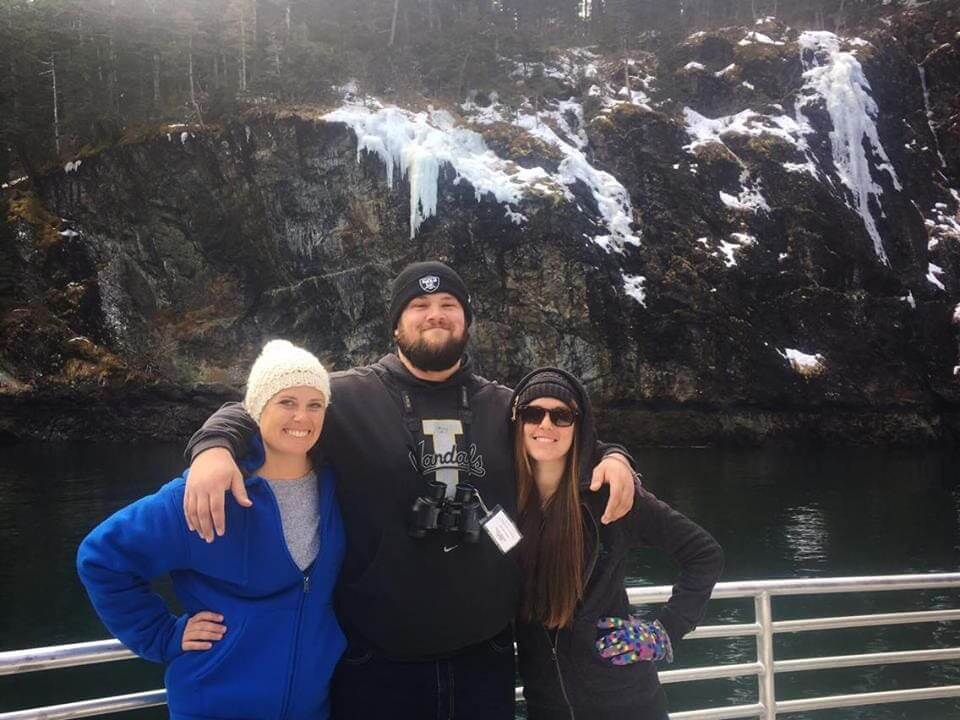
Captain Josh started by taking us up the west coast of Resurrection Bay for a good look at the abandoned pier of the subterranean Caines Head Fort, and I wondered again at how distinctive the high-tide line of white snow appeared against the black beach. After a good look at some harbor seals we peeled away from the coastline and made our way back to the east side of the bay. Spencer and Liz and I watched the coastline pass from the second deck, not needing words, so full were we in that feeling of restless restfulness that comes with watching puddled sky sweep beneath the hull of the boat. The soul-satisfaction of motion made exquisite.
I watched the opposite coastline loom closer, cirque glaciers growing as we approached, and then we slowed into Resurrection’s Bay’s winter gem: Thumb Cove. The cove’s trio of glaciers hung above us, their jagged blue just visible through a fresh coat of snow. In the half-light of high clouds the peaks backing the bay stood just visible, and the way that light fell on those mountains escapes any hope of mine to describe. It was the kind of beauty that makes everything worth it, snow as soft as the hope of spring. Light like polish. As deep a joy as your own smile, felt.
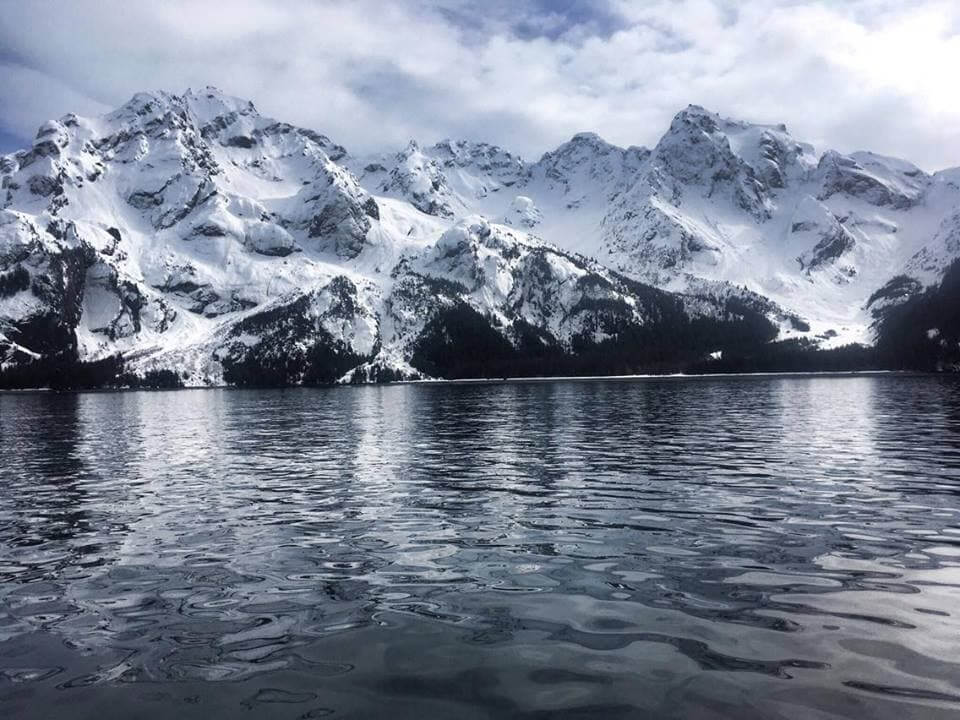
The Crew
Joana, one of the deckhands working that day, stood beside me on the bow. There is a certain light to a person for whom mountains like these are familiar, and Joana has that light. We talked of fresh snow and freshly-seen peaks.
But we moved on, and Captain Josh found us some mountains goats looking impossibly small and precarious a cliff away from our boat. With some provided Major Marine Tours binoculars I scanned the cliff beside Eric, another deckhand on duty; I checked first to see if I should follow his eyes to a bird, as he invariably spots the coolest ones. “There they are,” he said of goats instead, and moved on to point out the off-white shapes to passengers. I continued watching, endlessly amazed at the abilities of these goats, casually napping on the sheerest of cliffs.
We left the goats, though, and made our way towards a frozen waterfall in a pool of shadow. In summer, Major Marine Tours boats will edge up beneath this waterfall until passengers can stand on the bow and feel the water drip like rain on their upturned faces. In winter, however, that stream lies frozen in daggers of blue ice. Liz stood up, her earrings swaying in time with her long braids. “Time for a picture, Spencer,” she said, and pulled us all out on the bow to where Eric snapped a picture of us framed by frozen falls.
With some snacks from Jen, the senior deckhand for the trip who (random fact) was once a cake artist in New York, I sat down while we made our way past the snow-covered pillows of uplifted seafloor to Emerald Cove. Steller sea lions sat light and dry on the upper reaches of their haul-out. Early kittiwakes rafted on the water — last week, I had been almost ecstatic to see these white gulls move to their own winged currents, just as snow began to fall in mirrored gusts of white.
An idea flashed in my mind as I stood on the bow. “I just invented a joke,” I said suddenly, looking at a pair of eagles perched above the kittiwake colony. I turned to Spencer, Liz, and Joana. “What are the two happiest birds in Kenai Fjords National Park?”
They looked at me.
“Peregrine falcons,” I said. “Pair-a-GRIN.”
If you ever want to experience a truly dead stare, tell that joke to Eric when you’re next on a Major Marine Tours boat. My theory is that he loved it too much.
The Wildlife
I had my moment with the Stellar sea lions, and then we started on our way back across the bay toward the cove where humpback whales had waited the week before. As we moved I kept my eye out for gray whales, the most lovably awkward species of whale. They were the reason I first thought of moving to Alaska, back when I had thought to hitchhike the entire route of their migration, from Baja to Barrow, for the sake of a book I hoped to write (yet which unfortunately had already been written). No gray whales appeared, though the water sat heavy with light.
“What would you do if an orca appeared right now, just there,” I said to Liz and Spencer, fully joking. We had seen only one orca this season, on a boat without me. When I saw my first orca of the year, I predicted, I would probably cry.
I heard a cry from one of the tables. “Killer whales, I see killer whales!” I looked over to see a dad hurriedly positioning his kids to see out the windows. No way, I thought, it couldn’t be. We couldn’t be this lucky. Then I looked out of the window.
Orca.
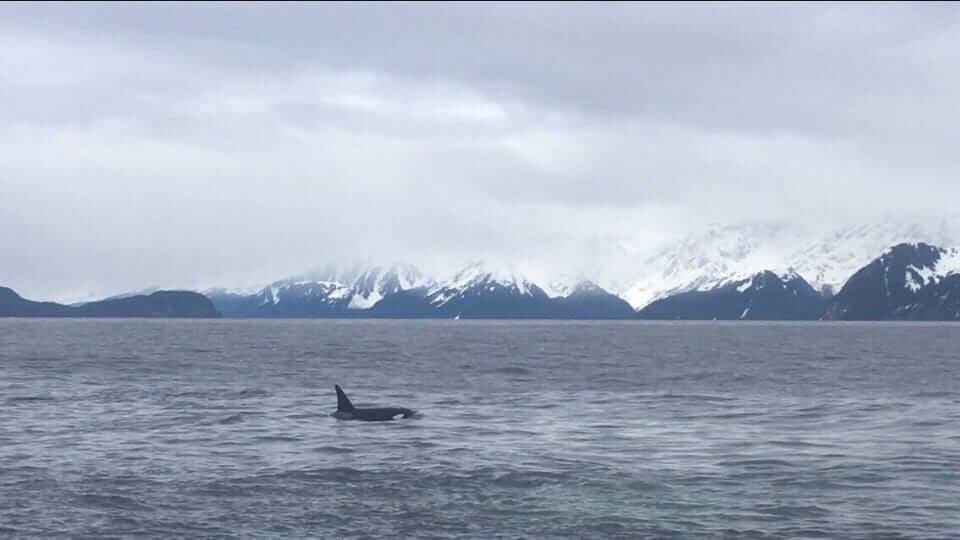
The tall black fin rose up, noiselessly, then slid back down into the grey water. A second fin followed – a female – and then something odd, a very young calf with what appeared to be a bent-over dorsal fin.
I joined the rush to the bow, shot through with joy. Jen was on the bow already, without even a jacket, so happily shocked that none of us could properly speak. I spun around to hug Liz, then Spencer. “No way!” we kept repeating.
(Spencer, it should be noted, draws orca like a magnet. With him on the boats, this season will be dotted with dark fins. As his first trip of the season proved.)
They dove down, and then came the whale-down hush that is my favorite moment, when sight spins everywhere, and you focus so much that for the first time you really see. Bear glacier dipped down to the beach on our starboard side, its icebergs just visible over the trees. Rugged island stood accentuated in drifts of snow. The Chiswell Islands, where summer would take us, formed staggered silhouettes against the yellow-blue clouds. I traced the line of the Harding Icefield and imagined re-discovering the tidewater glaciers that it fed. And all of this ended at a gray line, the waters of Resurrection Bay, stirred by the gulf of Alaska where the rest of our summer wildlife bided their time. Now, however, it was a world that hid the secret movements of one of the most intelligent species on the planet. The floor of our world, the roof of theirs.
And then we met in the middle. A distant blow. A fin. The pod moved closer and we stayed as still as breathing. There are no words to describe the awe of being in the presence of such a vast intelligence, so thoughtlessly wild. I felt full. Connected. I loved them intensely, and I loved the people beside me, and I loved the Major Marine Tours boat beneath me, and Resurrection Bay and Alaska and the world that held them all. In the presence of such pure being, it was impossible not to fully be. I felt the tears I had promised in the throb of my spirit, if not in my eyes.
And just like that, spring had come.
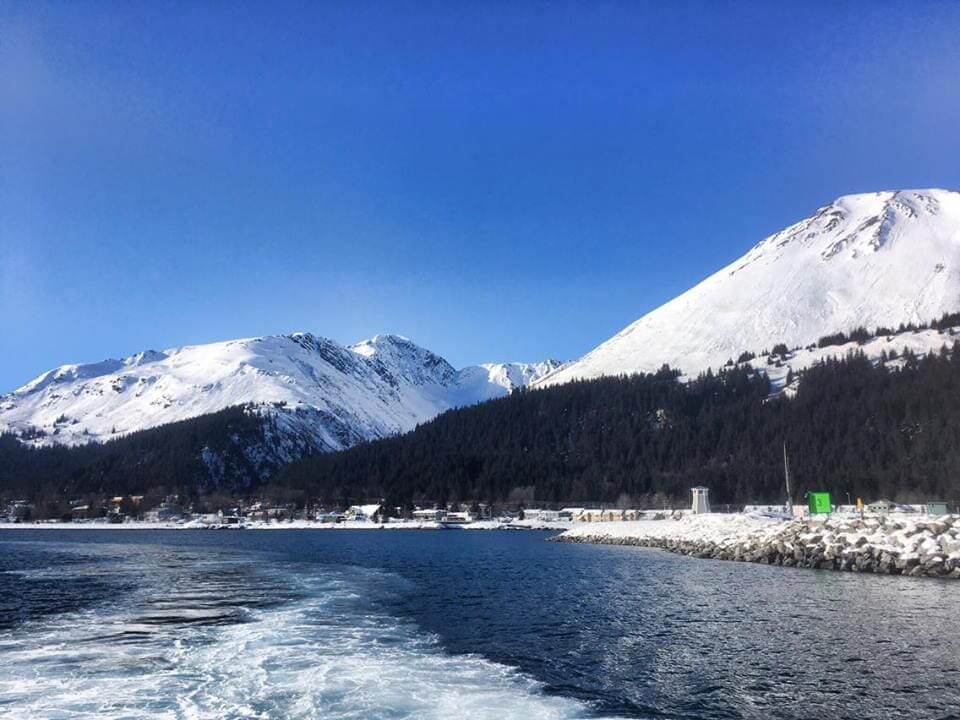
There is a pulse now, an energy to Resurrection Bay. Life is growing, building into the wild frenzy of Alaskan summer. Very soon the water will be green and not blue, the humpbacks will pop up at every corner, the puffins will drop to their nests, and Resurrection Bay will become once again the frantic static of predictable life. But right now, every moment is movement. Every breath on the bay is a discovery. And every single day tells a different story from the last.
Motion made exquisite, I wrote earlier of the feeling of being on the water. As the days surge further, this is the phrase that roars in my mind. This is what it means to stand on the deck of a Major Marine Tours boat in April. And this is Seward in Spring.

Tamara Lang is a returning deckhand with Major Marine Tours in Seward. She is a writer of creative nonfiction and the author of “Upstream: A Written and Photographic Journey up the Los Angeles River.” Her writing and her travels can both can be followed on facebook at Tamara Lang Writes, or at tamaralang.com.
Signup for our newsletter to get the most recent Major Marine updates.